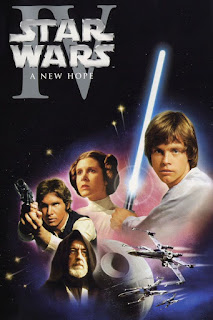
This is a former student (she's going into first grade, now). When I teach courses on young children and the arts, this picture resonates for me. A child who has the opportunity to listen to music, feel it, and respond to it is finding her creative center. In schools, today, children need to learn through all their senses, through their bodies, as well as their minds and imaginations.
I teach my college students that American children are several years "developmentally delayed", musically. As a nation we are more music consumers, than music makers. I show them videos of children in other cultures making sophisticated rhythm and music when they are only four and five years old--mostly unheard of here. I emphasize the connection between musical and language development, and how those areas of the brain are close together. We discuss ways to infuse music and movement into every aspect of the curriculum. Before the state cut out the Community College class on Music & Movement, my class produced teachers and caregivers who made a new commitment to musical exploration, movement, and learning steady beat. One center director purchased $800 of musical instruments and a rolling cart for her teachers to use in each of their classrooms. She took sound exploration seriously as a part of a child's early learning.
I want to eventually do a presentation at the Oxford Round Table on the importance of musical experience, including movement, to a child's development. I would really rather not get into the whole "music makes other curricular areas better" argument! Yes, I believe this is true, but why do we need to justify immersing children in their birthright? People have always made music, and music is a part of culture. Music connects people, and music cultivates understanding of others. Music connects us to ourselves. I would rather show how a child's musical development is important to quality of life, and to their ability to learn.

 This is a former student (she's going into first grade, now). When I teach courses on young children and the arts, this picture resonates for me. A child who has the opportunity to listen to music, feel it, and respond to it is finding her creative center. In schools, today, children need to learn through all their senses, through their bodies, as well as their minds and imaginations.
I teach my college students that American children are several years "developmentally delayed", musically. As a nation we are more music consumers, than music makers. I show them videos of children in other cultures making sophisticated rhythm and music when they are only four and five years old--mostly unheard of here. I emphasize the connection between musical and language development, and how those areas of the brain are close together. We discuss ways to infuse music and movement into every aspect of the curriculum. Before the state cut out the Community College class on Music & Movement, my class produced teachers and caregivers who made a new commitment to musical exploration, movement, and learning steady beat. One center director purchased $800 of musical instruments and a rolling cart for her teachers to use in each of their classrooms. She took sound exploration seriously as a part of a child's early learning.
I want to eventually do a presentation at the Oxford Round Table on the importance of musical experience, including movement, to a child's development. I would really rather not get into the whole "music makes other curricular areas better" argument! Yes, I believe this is true, but why do we need to justify immersing children in their birthright? People have always made music, and music is a part of culture. Music connects people, and music cultivates understanding of others. Music connects us to ourselves. I would rather show how a child's musical development is important to quality of life, and to their ability to learn.
This is a former student (she's going into first grade, now). When I teach courses on young children and the arts, this picture resonates for me. A child who has the opportunity to listen to music, feel it, and respond to it is finding her creative center. In schools, today, children need to learn through all their senses, through their bodies, as well as their minds and imaginations.
I teach my college students that American children are several years "developmentally delayed", musically. As a nation we are more music consumers, than music makers. I show them videos of children in other cultures making sophisticated rhythm and music when they are only four and five years old--mostly unheard of here. I emphasize the connection between musical and language development, and how those areas of the brain are close together. We discuss ways to infuse music and movement into every aspect of the curriculum. Before the state cut out the Community College class on Music & Movement, my class produced teachers and caregivers who made a new commitment to musical exploration, movement, and learning steady beat. One center director purchased $800 of musical instruments and a rolling cart for her teachers to use in each of their classrooms. She took sound exploration seriously as a part of a child's early learning.
I want to eventually do a presentation at the Oxford Round Table on the importance of musical experience, including movement, to a child's development. I would really rather not get into the whole "music makes other curricular areas better" argument! Yes, I believe this is true, but why do we need to justify immersing children in their birthright? People have always made music, and music is a part of culture. Music connects people, and music cultivates understanding of others. Music connects us to ourselves. I would rather show how a child's musical development is important to quality of life, and to their ability to learn.


Comments